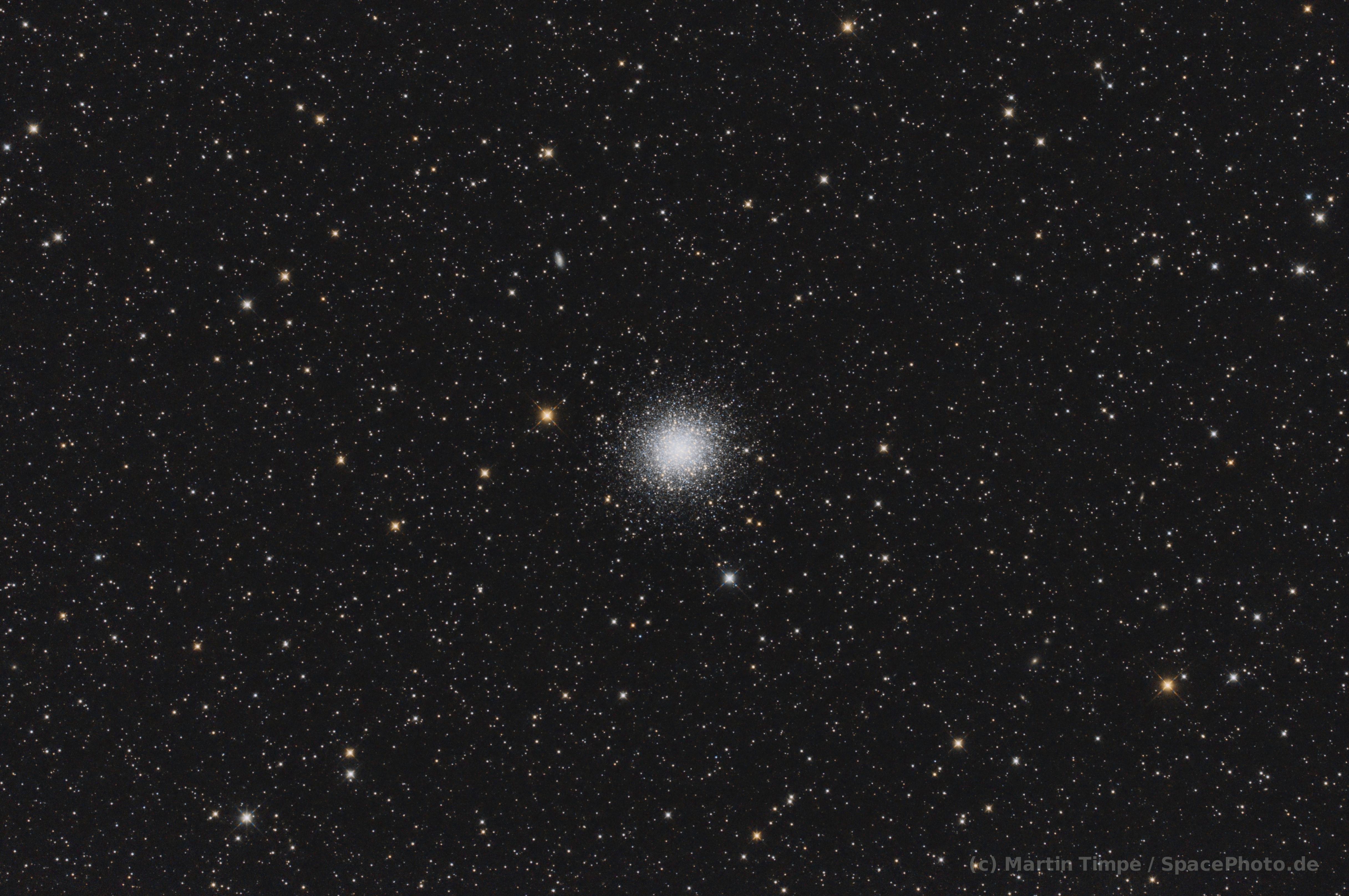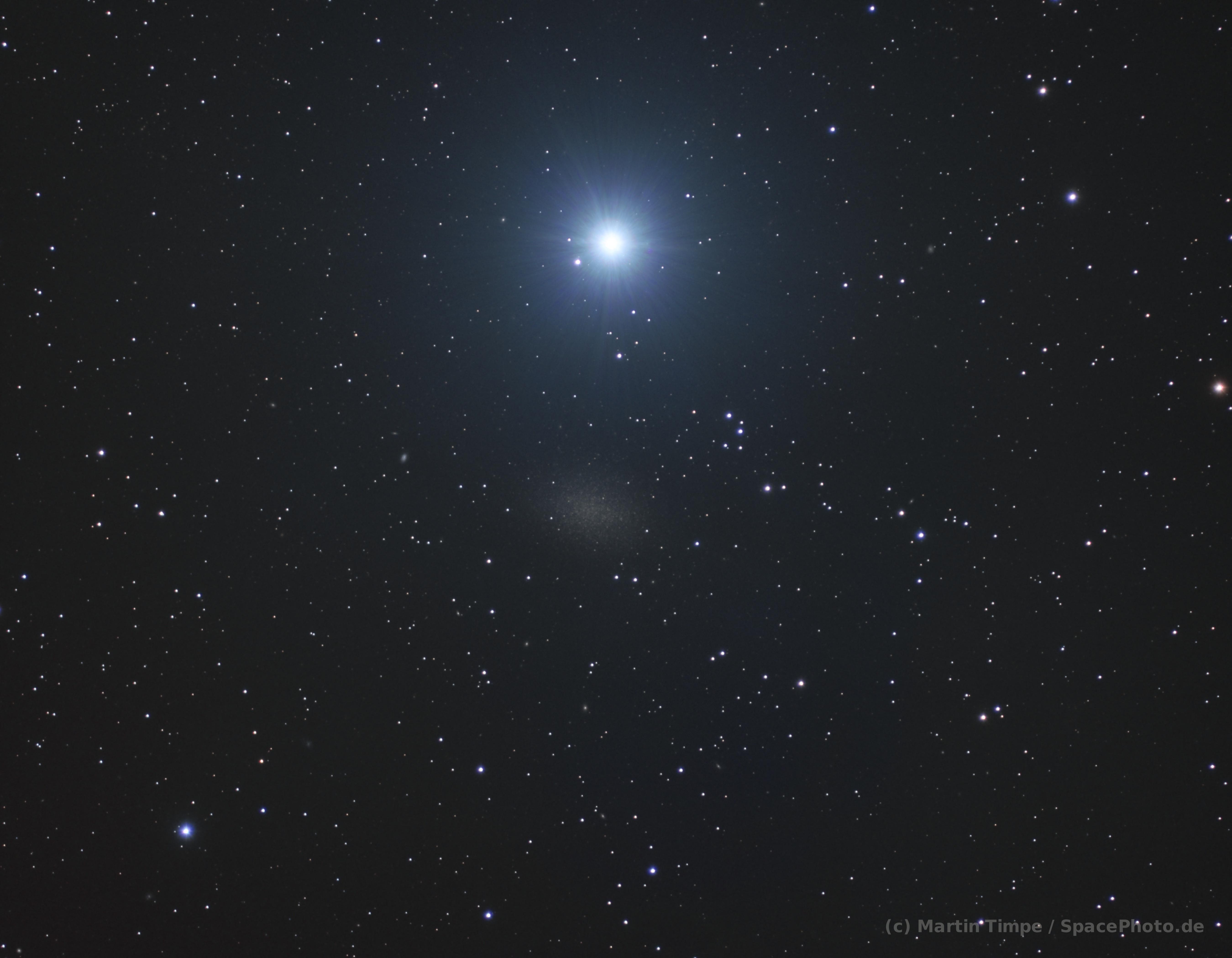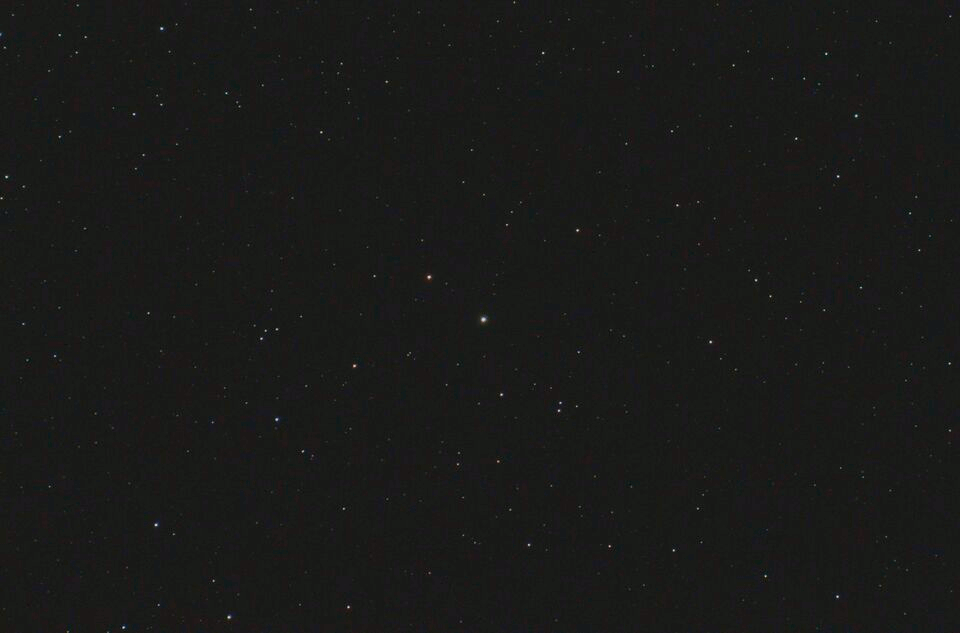Tadpoles in the Cosmic Pond: IC 410 and NGC 1893
In the constellation Auriga on clear winter nights one can find the open cluster NGC 1893 embedded in the emission nebula IC 410. While NGC 1893 can be observed visually using a telescope with proper aperture the faint nebula IC 410 is a real hard case for the visual observer and much easier to catch by photography. Due to some smaller but prominent star formation regions the nebula IC 410 is nicknamed as the "tadpole nebula". IC 410 was discovered on September 25, 1892 by the (german) astronomer Max Wolf (June 21, 1863 - October 3, 1932) while the open cluster NGC 1893 was discovered already earlier on January 22, 1827 by the (british) astronomer John Herschel (Mar 7, 1792 - May 11, 1871).

IC 410 and NGC 1893, camera Atik 460EXmono, optics Lacerta Newton f=1000mm f/4, 2023-02-08, Bad Kreuznach, Germany
What can be seen in the image is what cannot be seen visually through a telescope. The image is presented in false colors resulting from an (amongst astro-photographers widely known) image acquisition technique using narrow band filters.








